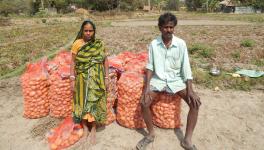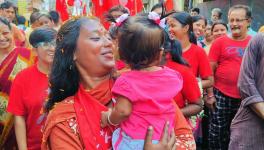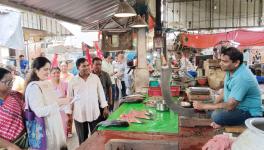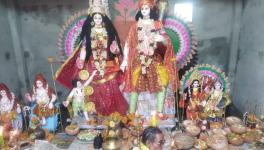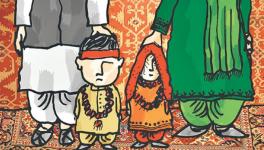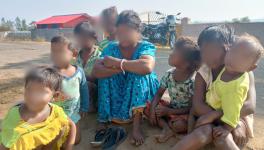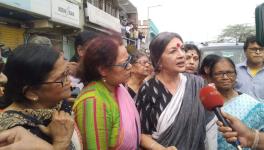‘We’re as Indian as any Other Indian’, say Chinatown residents
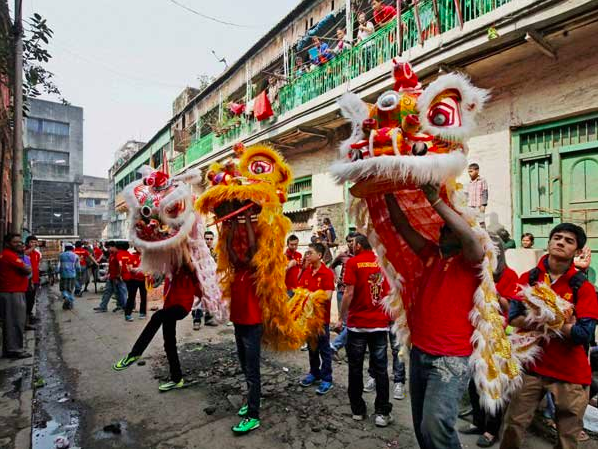
Image Used for Representational Purpose Only
“Coronavirus! Coronavirus!” The shouts from passers-by rang in her ears as she was buying vegetables and fish in the market one morning, soon after the Covid-19 pandemic broke out in India. A resident of Bhilai, Chhattisgarh, the home-maker whose ancestors migrated to India from China in the beginning of the last century had never considered herself anything but Indian. “This is the first time that my mother felt insecure in her own country,” says Teh Sunn Liu, her son, a software engineer, recalling the incident.
Since that day, Teh’s family has been feeling depressed. For, what happened to his mother was not a one-off incident. “My father too was harassed at a petrol station, where he was called ‘Coronavirus’ by a jeering crowd, until the owner intervened and shooed them away,” Teh says.
Though Teh’s mother ignored the harassers, quietly finished her shopping and returned home, his father had felt enraged at his tormentors. “The owner of the petrol station had to calm him down with reassurances like, ‘Don’t worry, they are just illiterate and don’t know better’,” says Teh.
With the Chinese city of Wuhan being called the epicentre of the Novel Coronavirus, there are reports of Chinese people around the world being targeted and harassed. From verbal abuse to physical violence, a new Wikipedia page enumerates the reported incidents of Sinophobia that have occurred in various countries since the pandemic started. In fact, not just the Chinese, but people of other Southeast Asian countries as well as Indians of Northeastern states, many of whom have Mongoloid features, have been facing discrimination.
In India, students from the northeastern states filed a complaint with their college authorities in Delhi about being targeted along racial lines by fellow students over fears of the virus. In another incident, eight students from the Northeast in Mumbai alleged that they were subjected to “racism and harassment”.
Indians of Chinese descent who live in the northeastern states say that they feel safer at home than if they had been living somewhere in the mainland. “Here in the Northeastern states, there is no discrimination based on looks or facial features because the Chinese-descent Indians and the native Indians here look very similar and have the same physical features. But I am worried about violence against friends and family who live in the mainland. We know that such harassment is not perpetrated by rational people, but that there is a lot of irrationality that is spreading,” says Teh.
Psychologists link the propensity for retributive backlashes to a deep-seated distrust of the ‘Other’. Debashish Ray, a Kolkata-based clinical psychiatrist explains that gestures of hatred, such as violent attacks or verbal abuse against entire peoples and communities are rooted in fear, even though such vengeful actions often seem come from a position of strength. “Lack of empathy, exposure, tolerance and the ability for logical thought is behind what has come to be known in common parlance as ‘mob mentality’, in which groups of people of one community target another other,” Ray says.
That knowledge is small comfort for those at the receiving end. “We are dismayed by the attitude that just because this Coronavirus is said to have originated in China, the Chinese people living anywhere in the world should face harassment,” says Monica Liu, who lives in Calcutta. An entrepreneur who owns six restaurants and eateries across the capital city of West Bengal, Monica’s family migrated to India from China during the Second World War. “My ancestors fled political China when clashes started between the emerging Communists and existing traditional political systems,” she says. “But I was born in Calcutta and therefore I am Indian by birth.”
Monica says that she was subjected to “community discrimination in my own land”—meaning India—only once before. That was during the India-China dispute that took place in 1962. She was ten years old at the time. The Indian government under Prime Minister Jawaharlal Nehru decided to shift those Chinese people who had migrated to India in recent years, and who had settled in various parts of the eastern region, to a separate zone. Chinese-origin people from West Bengal, Assam and other Northeast states were accordingly put into trains and sent to live in large “camps” in far-off Rajasthan. The move was justified by the Indian government as a means to protect the Indians of Chinese descent from attacks from the public. However it was also criticised as a violation of their human rights.
“I don’t know which it was—for our protection or because the two countries were at war—but I felt as Indian as any other Indian,” Monica says.
Monica and the others had stayed in these camps for six long years. “It was not unpleasant, we were treated well,” she recalls. “However, the food was very insipid, mainly gourd (lauki) and rice, and I’m permanently averse to that vegetable now,” she says.
This family, like many others, slowly returned to Kolkata (then Calcutta) and rebuilt their lives from scratch, but fears that such a situation could occur again persisted. The fears resurface, for instance, every time they hear of incidents such as the recent sparring that took place between Indian and Chinese personnel deployed along the international boundaries between the two countries. Such incidents become a cause for concern in the Chinese-origin Indian community. “I look Chinese because my ancestors were Chinese, but I am Indian,” Monica says, sounding exasperated. “People don’t know that, of course,” she says, breaking into a laugh.
Kolkata is the only Indian city with a separate neighbourhood for the people who migrated to India from China. Though it is called Chinatown, it is not just a residential area for the Chinese community but a vibrant commercial centre thronged by entrepreneurs, large restaurants, small eateries and a host of businesses, big and small, particularly those manufacturing or dealing in leather shoes, bags and other items. Monica says that people in Kolkata have a “few notches higher” levels of tolerance for members of her community than other parts of the country seem to have.
Indeed, Chinatown is considered as integral to Calcutta’s multi-cultural and cosmopolitan landscape as any other part of it. Its unique “Calcutta-Chinese” cuisine has made it one of the “must-do-before-I-die” destinations for visiting tourists. While the old Chinatown, located in central Kolkata, is famous for its early-morning roadside eateries that sell scrumptious and inexpensive breakfasts of chicken and fish pie, dumplings and desserts, the new Chinatown on the city’s eastern periphery is home to the more modern and bigger restaurants.
But Covid-19 and the lockdown have changed the landscape. It is not just the eateries, stores and shoe-makers who have shut down, but, as Monica says, the residents are feeling vulnerable today in a way they did not earlier. “There is certainly a feeling of insecurity over and above the scare of the virus,” she says, adding, “There is an added tension. Rational people don’t attack, they know that we are ordinary human beings living our lives, just like them. We have nothing to do with the virus, even if it did originate in the land from where our ancestors came.”
The author is a freelance journalist. The views are personal.
Get the latest reports & analysis with people's perspective on Protests, movements & deep analytical videos, discussions of the current affairs in your Telegram app. Subscribe to NewsClick's Telegram channel & get Real-Time updates on stories, as they get published on our website.









